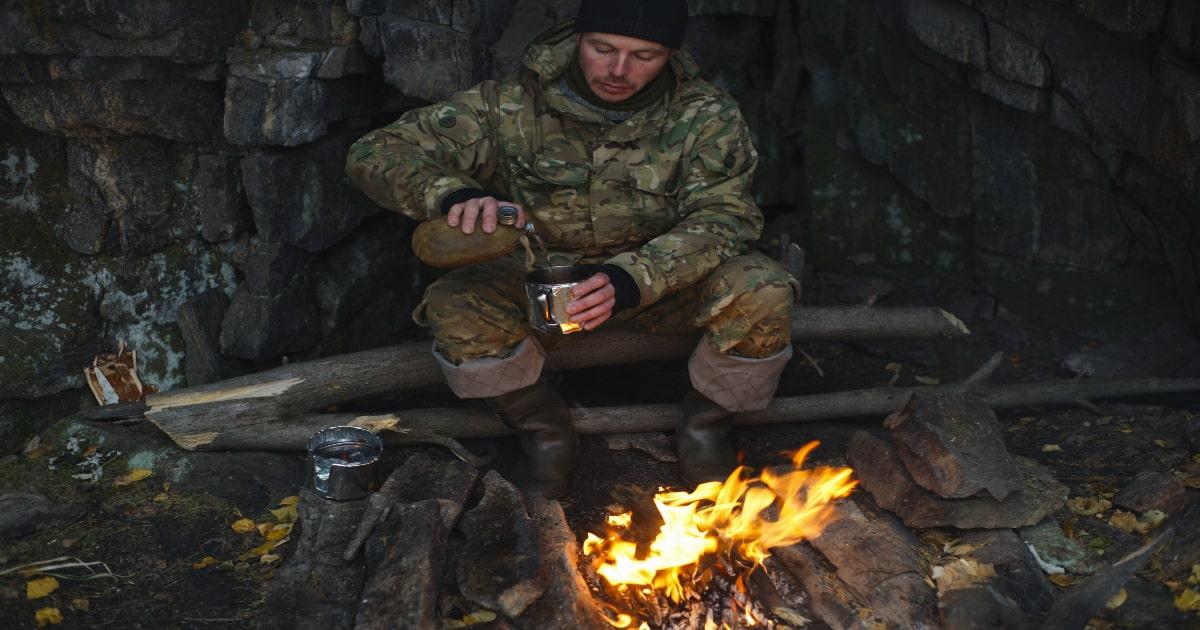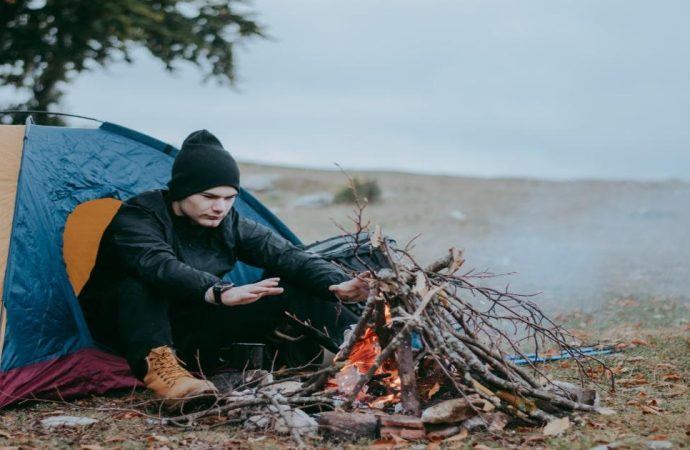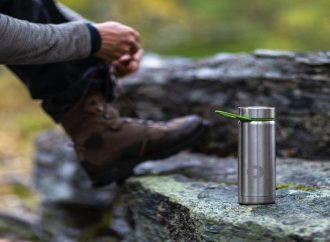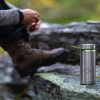It’s very easy to underestimate the British weather because there aren’t the climatic extremes such as blizzards and twisters. However, it only takes a small drop in the temperature for the body to start cooling, and that can eventually lead to hypothermia. Many people die every year during the summer months due to exposure to
It’s very easy to underestimate the British weather because there aren’t the climatic extremes such as blizzards and twisters. However, it only takes a small drop in the temperature for the body to start cooling, and that can eventually lead to hypothermia.
Many people die every year during the summer months due to exposure to cooler air, and many more during harsh British winters where the temperatures regularly dip below zero degrees. Underestimating how much warmth the human body needs can quickly become a fatal mistake.
As a prepper, you may be forced to bug out during the winter months when the temperatures are even lower, or bug in without the prospect of central heating or heating of any kind.
In cold weather, you’ll need proper survival know-how in order to prevent you or your party from becoming seriously ill, or dying. Getting a fire going and sitting next to it to warm up is a given, and the best way to stay warm in cold weather, or drinking a warm tea or even just some warm water.
There are some things like these which are just simple good sense, but there are other ways to stay warm which aren’t quite as obvious.
How to Dress for Cold Weather
Staying warm isn’t just about piling on as many clothes as you can fit, even when the temperatures are freezing.
The goal is four-fold: to wick moisture away from your body, stay dry, trap heat and protect yourself from the elements.
If you wear too many layers, you’ll have to remove or add layers constantly. This exposes you to the cold and means you lose core body heat. It’s inefficient at best, and at worst can be dangerous.
When you layer up properly, you’ll be able to keep more or less the same type of clothing on in temperatures ranging from 15°F to 50°F. This means if you’re a prepper getting gear ready for a survival situation, you don’t need to worry too much about the season.
When the SHTF you want to grab your stuff and go without stressing about whether the right clothes are in your pack. Some of the best brands dedicated to outdoor gear, with a wide selection of quality clothing for all weathers include:
Berghaus – designed specifically for the outdoor lifestyle, whether it’s climbing a mountain or bugging out.
Decathlon – a true outdoors company with everything from camping gear to quality extreme sports wear
TOG24 – a Yorkshire brand catering for men, women and children in the outdoor clothing department
Timberland – offering a perfect balance between outdoor living and city style for both men and women
Highlander Outdoor – quality combined with affordability with everything you need for outdoor living
WildBounds – a British-based company offering a wide selection of hand-picked clothing and outdoor gear

Whatever body part you’re trying to protect, layers are your friend. Below are some guidelines about how to layer up the various body parts
The Core
Start with a base layer. The goal of this is to wick sweat away from your body and keep you dry. A damp or wet base layer is one of the quickest ways you can develop hypothermia in cold conditions.
Natural fabrics such as cotton should be avoided as they take a long time to dry. Choose synthetics, silk or even better, wool. These are all very effective in wicking away dampness.
Next comes the mid layer and this is all about insulating you. The idea is to trap a layer of air next to your body which will keep you warm without overheating. If this layer is too tight and formfitting, you won’t be able to get sufficient air. Aim for light and fluffy for maximum insulation.
A fleece jacket is an excellent example of an efficient mid layer.
You can put on secondary mid layer, and it’s a good idea when the weather is very cold. A chunky woollen jumper or a puffy, down-filled jacket both help to provide insulating heat.
The final layer is the shell, and this is all about protection. The goal of this final layer isn’t to add further warmth, but to protect your other layers from getting wet with a waterproof jacket and to stop the wind from cooling the body heat you’ve generated with a windproof shell.
The problem is that the shell isn’t a breathable layer and can make you hot and sweaty. If you’re going to be very active and the weather isn’t bad, you might want to leave your shell off until you stop moving around.
Legs
You should layer up your legs in a similar way to your core, except that you’re unlikely to want two mid layers, due to a lack of manoeuvrability. What does work well is a pair of skins and then regular trousers over the top.
Some people also leave the third layer off their legs while they’re active, which can be a shell of waterproof material, as this part of the body can get quite hot. However, as soon as you are sedentary, put the third layer on.
Hands
It might seem simple enough to pull on a pair of gloves and socks, but that won’t be enough to protect your extremities from the cold.
On your hands, a thin base layer made from wool or synthetics will wick away any moisture or sweat. An insulating glove made from wool or fleece should be worn next to trap the heat. This layer should be a glove, not a mitten so you retain dexterity.
The final layer is a shell mitt, made from material which is both waterproof and windproof.
These will be big and bulky and protect against the elements, but won’t be any use to carry out survival tasks.
The best shell mitts have fingers which fold back, this means you don’t have to keep taking them on and off. Some specialist ski gloves may well have all of the required layers in one item, and still allow you a decent level of manouverability.
Feet
Similar principles apply to the feet. Start with a base layer to wick away sweat, but try to avoid synthetics if you can. Although synthetics will deal with the moisture well, they’ll quickly become smelly in the foot area!
Silk or wool are better options for a base sock. An insulating sock comes next, and this should always be wool. It’s advisable to have a spare pair of insulating socks in your prepper’s pack. The final foot layer should be large, oversized winter boots.
They should have a protective shell and thick soles to prevent the cold from reaching your feet. If you don’t have proper winter boots, gators can prevent water and snow from getting inside.
Head
Most of the body heat is lost from the groin, armpits and your head, so be sure to wear a warm hat during cold weather. Some of the best materials are cotton and wool due to their natural ability to insulate, but there are lots of hats on the market which will do a top job.
Wrapping a scarf or neck gaiter around you too is also a great way to prevent heat loss that may come out of your core layers. To keep the face warm too a balaclava is the best item of clothing you can have.
Ways to Help You Stay Warm

As we’ve seen from the above, staying warm is imperative in cold conditions. Dressing properly for the cold weather is one of the single most important things you can do. If you’re not protected from the wet, wind and low temperature then you’ll be fighting a losing battle.
However, there are a few other little tips to help you conserve heat:
- Don’t overexert yourself. It’s easy to get sweaty and this will make you cold. Activity also burns valuable calories the body needs to keep you warm. Move around enough to stay warm – but not too much.
- Keep your mouth covered. This stops cold air from entering your lungs and cooling your body. Cold air can also exacerbate respiratory problems such as asthma so pull a face gaiter over your mouth.
- Don’t venture too far from your shelter. If you’re getting too cold, you need to be able to warm up again quickly. In cold weather it can be difficult to regain lots of lost heat.
- Drink something warm. Heat some water on the fire and drink it. The heat from the water you ingest will transfer to your body. Some herbal tea from foraged leaves makes the drink better, but for survival you only really need water to warm up. Do not drink cold water.
- Never sleep directly on the ground as it will be wet in the morning. Even a plastic groundsheet or bed of leaves on the floor is better than nothing as its coldness will transfer into you.
- Make sure your location is as insulated as possible. Block any holes letting in cold air and don’t sit near a draft as it will cool you down quickly.
- Huddle together with other people or animals. If you are trying to go to sleep or stay warm in the day, cuddle close together with other people or an animal to share body warmth.
- Collect kindling on your forages. Fires take a lot to keep burning so collect it as you go. This is especially important in wet conditions as it gives you enough time to dry it out. So when the weather is dry, make the most of it, and pick up items as you do other tasks like hunting.
- Urinate regularly. This means your body won’t waste energy heating up waste liquid. You can even pee into a ziplock bag for a temporary hot water bottle if your fingers or toes are cold to warm them up.
- Heat stones in the fire. Take the hot rocks and place them in your shelter. This provides heat without a fire risk and can be like a hot water bottle if wrapped in an item of clothing. Don’t place them directly on your groundsheet though.
- Get the blood pumping. When sedentary, tense and relax your muscles to increase blood flow and heat
When the SHTF you want to grab your bug out bag and get out of there if the situation requires it, and we advise you should always stay bugged in unless you really have to bug out, especially in winter.
If the weather is cold, you won’t survive long unless you’ve got some essentials ready. Below is a recommended prepper list for survival and staying warm in the British climate:
- Closed-cell foam pad (to sit on)
- Calorie dense food, such as energy bars
- Water, and a way to boil it.
- Fire-starting equipment
- Hand warmers
- Extra mid layer
- Spare hat, socks and gloves – these can easily get wet or lost
- Tent, tarp or bivvy
- First aid kit
- Gas stove and cooking pot
- Candle lantern – some types can also provide emergency heat
- Survival blankets – choose from emergency or mylar
Things To Avoid When In Cold Weather
Above is a list of ways to help preppers in a survival situation, but it’s also important to prevent doing anything which will have an adverse effect.
Here is a rundown of some things to avoid:
- Eating snow. Even if you’re dehydrated this is a bad idea as it will drop your core temperature. Melt it first and boil it if you can, then drink it.
- Making a large shelter. This is because it’s harder to heat. A smaller area will help you stay warm. Always have the ability to make it an enclosed space and keep wind and rain out
- Leaving wet clothing next to your body. This will make you cold quicker than anything else and puts you at risk of hypothermia, change out of it as soon as possible.
- Taking your gloves off to operate equipment. Your hands will freeze quicker than you think and you could develop frostbite. Wait until you are in your shelter to remove your gloves.
- Drinking alcohol. It may make you feel warmer but it dilates blood vessels so you’ll actually begin to lose heat.
- Skimping on food. You may need to ration what you eat but in cold weather your body needs calories to stay warm. Learn how to forage to increase the available food, and the movement will keep your blood moving and your body warm.
- Wearing dirty clothes. If you have more than one set of clothes, cycle between them and make sure they stay clean. Dirt can make them matted, stopping layers from being as effective in keeping you warm.
Summary
It’s very easy to assume that a bit of cold weather won’t do any harm but it’s surprisingly easy to die from exposure in any season of the year – shelter, fire, water and food are the essentials of survival.
The risk during the winter months is significantly higher, so knowing what to do to keep out the cold is an essential survival skill.
In Britain, we may get snow and ice, plus rain and sleet, and the temperatures can go below freezing – especially in Scotland. All these conditions will quickly kill if you’re not properly protected and prepared.
Understand the principles of staying warm, and what to avoid, and you should be able to stay protected for long enough to ride out the worst of the weather.





















